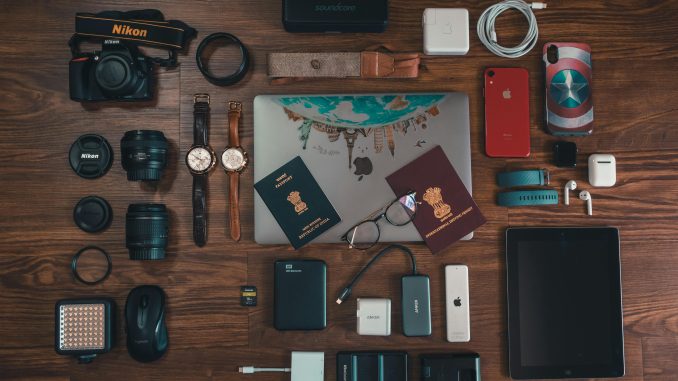
Are you fascinated by those stunning portrait shots with dreamy, blurred backgrounds? That’s the magic of the bokeh effect—a top-trending photography technique that’s not just limited to DSLR or mirrorless cameras anymore. Whether you’re shooting with a smartphone, a webcam, or even using AI-enhanced photo software on your computer, this guide will show you how to create bokeh with any camera, even if you’re a beginner.
TL;DR: Learn how to achieve DSLR-like bokeh using your phone, computer, or webcam, explore the best budget-friendly tools, and discover high-end AI and lens alternatives to boost your photo quality.
🔍 What Is the Bokeh Effect?
Bokeh refers to the aesthetic quality of the out-of-focus areas in a photograph. It’s most noticeable in portrait photography where the subject is sharp and the background is artistically blurred. The term comes from the Japanese word “boke,” meaning “blur” or “haze.”
Bokeh isn’t just beautiful—it helps isolate your subject, reduce distractions, and create a professional, cinematic feel, making it a hot topic in smartphone photography, vlogging, and webcam streaming.
📱 How to Create Bokeh with a Smartphone
✅ Use Portrait Mode (Built-In Software Bokeh)
Most modern smartphones, especially flagship models from Apple, Samsung, and Google, come equipped with Portrait Mode, which uses computational photography to simulate shallow depth of field.
Phones That Excel at Bokeh:
- iPhone 15 Pro / iPhone 14 Pro Max
- Google Pixel 8 Pro
- Samsung Galaxy S24 Ultra
- Xiaomi 14 Ultra (for budget-conscious users)
Tip: For optimal bokeh, ensure your subject is well-lit and a few feet away from the background.
✅ Use Third-Party Apps for Enhanced Blur
Try apps like:
- Focos (iOS) – Adjust aperture and focus post-shot
- Snapseed (Android/iOS) – Manual blur control
- Lightroom Mobile – Advanced editing with radial blur
These apps provide DSLR-style bokeh simulation using AI and allow for more control over the final look.
💻 How to Create Bokeh with a Webcam or Computer Camera
✅ Use Background Blur in Software (Great for Zoom & Streaming)
If you’re on a MacBook, Windows PC, or Chromebook, you can use:
- Zoom or Microsoft Teams Blur Background feature
- NVIDIA Broadcast (for RTX GPUs) – AI-powered background blur
- OBS Studio + VirtualCam plugin – Add cinematic bokeh for Twitch and YouTube streams
✅ Upgrade to a DSLR Webcam Setup
For content creators and remote workers wanting professional-level bokeh, consider converting a DSLR or mirrorless camera into a webcam using:
- Elgato Cam Link 4K
- Canon EOS Webcam Utility
- Sony Imaging Edge
Pair this with a fast prime lens (like a 50mm f/1.8), and you’ll achieve real optical bokeh, which outperforms any digital blur.
🧠 Tech Specs That Affect Bokeh Quality
| Feature | What It Does | Recommended Spec |
|---|---|---|
| Aperture (f-stop) | Controls depth of field | f/1.2 – f/2.8 for stronger bokeh |
| Sensor Size | Larger sensors give better background blur | APS-C, Full-frame, 1-inch (phones = small) |
| Focal Length | Longer lenses isolate subjects better | 50mm – 85mm ideal for portraits |
| Distance to Subject | Closer subject + distant background = more bokeh | Get within 3–5 ft of your subject |
Tip: The lower the f-number, the better the blur. Combine that with a good lighting setup for best results.
🛒 Buying Guide: Best Cameras and Accessories for Bokeh on a Budget
| Product | Price Range | Why It’s Great |
|---|---|---|
| Canon EOS R50 | ~$699 | Budget mirrorless with APS-C |
| Sony ZV-E10 | ~$799 | Vlogging camera with webcam mode |
| iPhone SE 3rd Gen | ~$429 | Cheapest Apple phone with Portrait Mode |
| Google Pixel 7a | ~$499 | AI-driven background blur |
| Elgato Cam Link 4K | ~$129 | Turns DSLR into webcam |
💡 Tips to Maximize Your Bokeh Effect
- Use manual focus when available to fine-tune blur
- Place lights behind your subject to create glowing bokeh orbs
- Shoot at golden hour for soft, flattering lighting
- Clean your lens! A smudged lens kills sharpness and depth
🆕 2025 Updates in Bokeh Technology
- Apple’s AI-powered Portrait Video (iPhone 15 Pro) now mimics cinematic lens transitions
- Google Tensor G3 chip enables real-time bokeh in video calls and social apps
- Snapdragon 8 Gen 3-based phones use AI depth mapping for ultra-accurate edge detection
These enhancements make it easier than ever to create professional-quality bokeh with mobile devices and built-in webcams.
✅ Pros and Cons of Digital vs Optical Bokeh
| Feature | Digital Bokeh | Optical Bokeh |
|---|---|---|
| Control | Adjustable post-shot (via app) | Controlled through lens & settings |
| Quality | Sometimes artificial (edge artifacts) | Natural, creamy background blur |
| Cost | Low (apps, software) | High (camera + lens setup) |
| Convenience | Instant, mobile-friendly | Bulky but best for serious creators |
Final Thoughts: Is Bokeh Worth the Hype?
Absolutely. Whether you’re capturing portraits, recording YouTube content, or enhancing your Zoom meetings, bokeh makes everything look more cinematic and professional.
Even if you’re just using a budget smartphone or a built-in laptop webcam, there are many free and low-cost tools to simulate the effect. And if you’re into photography or content creation, investing in a fast prime lens or AI-powered software will elevate your visuals tremendously.
📌 Frequently Asked Questions (FAQ)
Can I get bokeh with an iPhone?
Yes! Portrait Mode on iPhones (from iPhone 7 Plus and up) delivers strong computational bokeh, and the iPhone 13 Pro and newer offer adjustable f-stop effects even after the photo is taken.
What is the best free app to add bokeh?
Snapseed is a top choice for Android and iOS, offering manual blur, vignettes, and portrait enhancements.
Is bokeh just a blur?
Not quite. Bokeh is about the quality of the blur. Good bokeh is soft, smooth, and enhances the subject—bad bokeh can look noisy or distracting
Leave a Reply